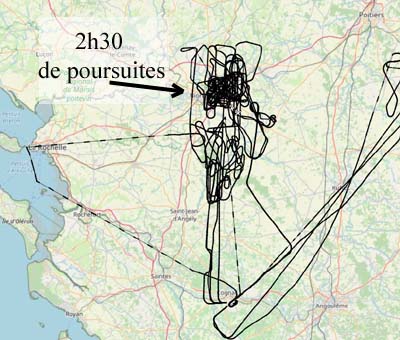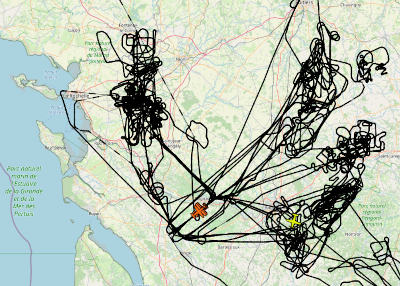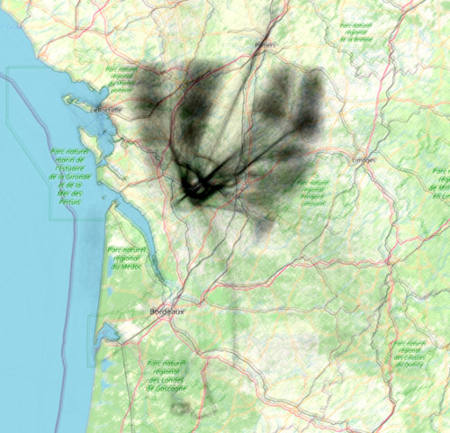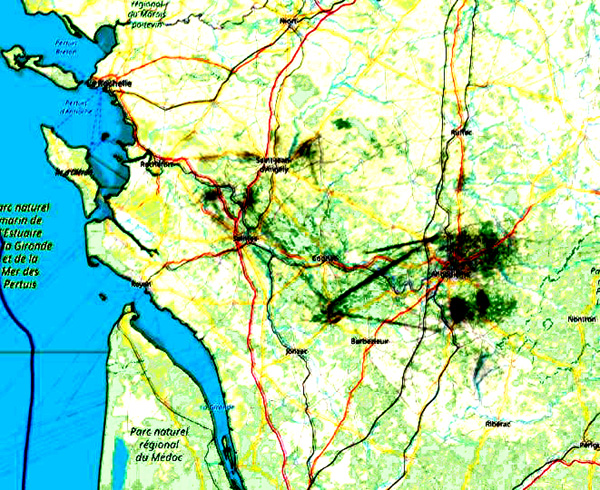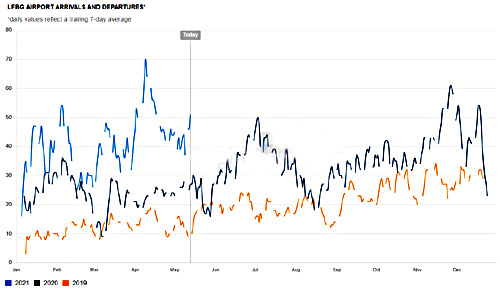|
The 709 air base located in Cognac and its military pilot school has for long attracted anger. Earlier, as it was stationed in Tours in the 705 base, the school motivated numerous reactions, relayed by elected representatives: "On December 21st 2006, Mrs Beaufils, the Indre-et-Loire senator, in a written question to the minister for defence (JO Sénat du 16/11/2006), warns the minister on the delicate living conditions for some inhabitants of Saint-Pierre-des-Corps. The senator underlines a 'huge anger from the habitants and associations from cities surrounding the 705 base of Tours' as well as serious troubles and sonic pollutions caused by the base and its daily over flights of Alphajets as well as sporadic Mirage missions." |
||||||
|
In December 2016, 17 advanced training planes Pilatus PC-21 were ordered to replace the AlphaJet ones in Tours. They are used to train, over one year, about 30 apprentices, 10 flying officers in charge of weapons, 10 flying apprentices from the navy, and 10 flight simulator trainers. The transfer to Cognac of the pilot school was achieved at spring 2020. The training in Cognac of fighter pilots starts on Grob 120 (phase 2), takes over on the swiss planes Pilatus 21 for the ones who orient to fighting, during 26 months (23 scheduled at 2025). It ends on Mirage 2000. |
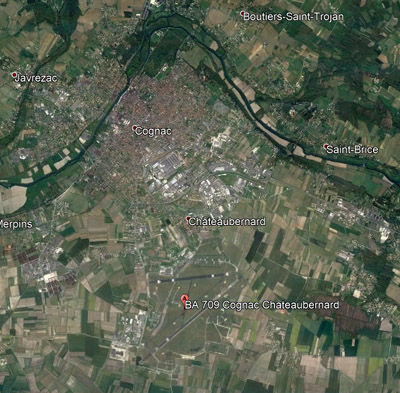 |
|||||
|
|
||||||
|
.
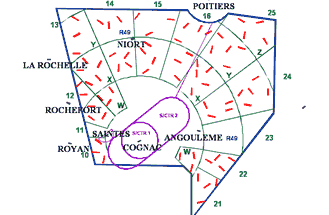 The working zones in 2006 |
In 2006, the working zones for the school were occupying two zones
extending over 18 000 sq km. Each of the 20 sectors building the zone
held each 4 aerobatics axes, concentrating nuisances. In 2020, colonel
Nicolas Lyautey would mention the existence of 13 000 sq km, suggesting
a focusing of disturbances since then. |
|||||
|
|
|||||
|
Pilot school : this is only the beginning With 17 Pilatus PC21 planes, the military pilot scholl
has already fully proved its great powers of nuisance. But the army
has, for base 709, much bigger ambitions and - but should we be surprised
- it did not show any other concern than the economical ones. * "Training of foreign pilots by the air army is a strong political and industrial stake. Experienced by the french-belgium trainings and mltiple bilateral actions, Cognac 2016 will naturally be open to several cooperations. The future school will, indeed, be empowered to train pilots for the benefit of our european partners... and also to the one of other nations which would like to benefit of the french knowledge." (headquarters of the air force, 2014).
|
|
The true / false of BA709
What
does the "grande muette" tell when she finally speaks ? Following
examples shows how the commandment may confuse the issue, regarding
technical data which are not supposed being mastered by the population.
N.B. The deputy assistant cited here had attended an information visit
on the base. • "Not more than 40 min. on the same district" (commander, april 2020): FALSE We have got multiple testimonies and radar tracks showing that planes or pair of planes could manoeuvre the whole morning and/or the whole afternoon on the same district, sometimes for every day in the week. • "The activity is spread uniformly" (commander, april 2020): FALSE Cumlated radar tracks at april 2021 show, at odds with this, that the base elaborates training scenarios that repeatedly impact specific zones. Moreover, these zones have now been reduced to 11 000 km2, to be compared with 13 000 km2 initially available, mainly for the benefit of costal areas. • "There is no impact on tourism. Anyway, there is no activity during august" (a deputy assistant, april 2021): FALSE In 2020, the missions from the school were almost normal. We received multiple testimonies from touristic facilty owners who tell how desperate they are. This assistant must have had in mind the coast fair he is used to. • "This new propeller plane is not noisier; it just makes a higher-pitched sound" (commander, 2020): FALSE The fact that this plane has a screw propeller does not help concerning its two exhausts turboprop without silencers.When the army chose this plane, the regular data to evaluate noise - the so-called NPD curves - were not available from the manfacturer. None of these curves has ever been produced by the army to justify such sayings. Finally, in dec. 2020 (Charente Libre), the commander concedes that his planes are "noisier". A nice example that the army administration tells the truth only when forced to. • "Starting recently, we now manoeuver on the ocean" (commander, dec. 2020): MARGINAL The training scenarios elaborated by the base only make use of very rare maritim transits and, very recently, of also very episodic manoeuvres by Hourtin. The overwhelming majority of missions are done over ground. In 2020, only between 1 and 2% of the missions where over sea. • "One cannot disclose the training spots: that would be too dangerous owing to terrorism" (a deputy assistant, april 2021): RIDICULOUS First, such spots are shown on maps that are sent to individuals who complain about the nuisance. Second, everyone may follow the planes trajectories on the web. Third, it would be much more simple for a terrorist to target a big commercial plane, than these tiny acrobatic Pilatus. And finally, what would be the problem, as the activity is officially spread 'uniformly' ? • "When they fly at 3000 meters, you do
not hear them" (a deputy assistant, april 2021): FALSE
We could observe that a PILATUS PC21 manoeuvring 3000 meters ahead, in
particular as it makes sharp turns, does produce a heavy sound
comparable to a sander on a floor above one's head. At this altitude,
two planes (as they usually are) have a noise impact over 40 dB. • "They dont fly during week-ends": TRUE Not sure, however, this is to spare inhabitants rather than pilots.. |
|
Pilatus PC-21: a specific impact The evaluation of sonic impact relies mostly on two
noise figures.
|
|
Compensations for airport annoyances: rural residents disregarded The Cognac-Chateaubernard airport owns a noise exposure plan,
which is mandatory. It is clearly expected a strong impact around the
base, particularly along the circular approach tracks ("D" zone). On
such zones, this may represent 100 to 200 overflights a day. We note
that the legal exposure plan did not incorporate the noisy PC-21 float,
so that its accuracy may be questionned. |

